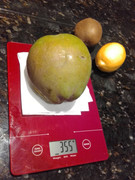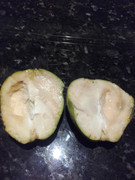I think that's a bad idea. It would mean it will be hard to search for info on kwai muk since most are used to the old name.
The best way to go imho if you want to use the new name is something like A.nitidus subsp. lingnanensis (ex hypargyraeus ).
It's long but at least you can find the thread with the old name.
Mama mia. You think people prefer to search by typing hypargyreus instead of kwai muk? Which is easier?
As I said, just get rid of hypargyraeus (sic.) and leave kwai muk.
Never quite understood people who want to perpetuate a mistake, presumably until the end of time. But you can't delay forever. Stop making excuses for people, it's not hard to learn a new name, and it is not hard to rename thread titles.
And have you thought about how many future newcomers to the forum might struggle to find information because a redundant and obsolete term has to continue to be used here? TFF should be on the cutting edge, not in sync with Wikipedia. But anyway, I am arguing to just remove the incorrect, not add the provisional new name, i.e. a neutral position.
Then there is the issue of A. hypargyreus actually already existing and being another species. What happens when people want to discuss this species or sell seeds? In fact, just to prove a point I think I might start a thread and cultivate the real hypargyreus as it is a fine tree anyway. Also, the new name for kwai muk is NOT A.nitidus subsp. lingnanensis. That is the CURRENT name. We do not know what the new name will be for sure. What we do know is that it will NOT be a subspecies of nitidus and we know that it NEVER WAS hypargyreus.
skhan mate, not sure what you are waiting for. I can PM you the peer reviewed articles if you need. Or I guess you can continue to trust nursery labels and amateurs on Wikipedia. This confusion has happened because A. hypargyreus is also known as a kwai muk, albeit its full name 白桂木 when translated is White kwai muk. The one in cultivation that everyone grows is Hong (Red) kwai muk. This is the main kwai muk, and so if no color adjective is used, by default the red one is being assumed.















